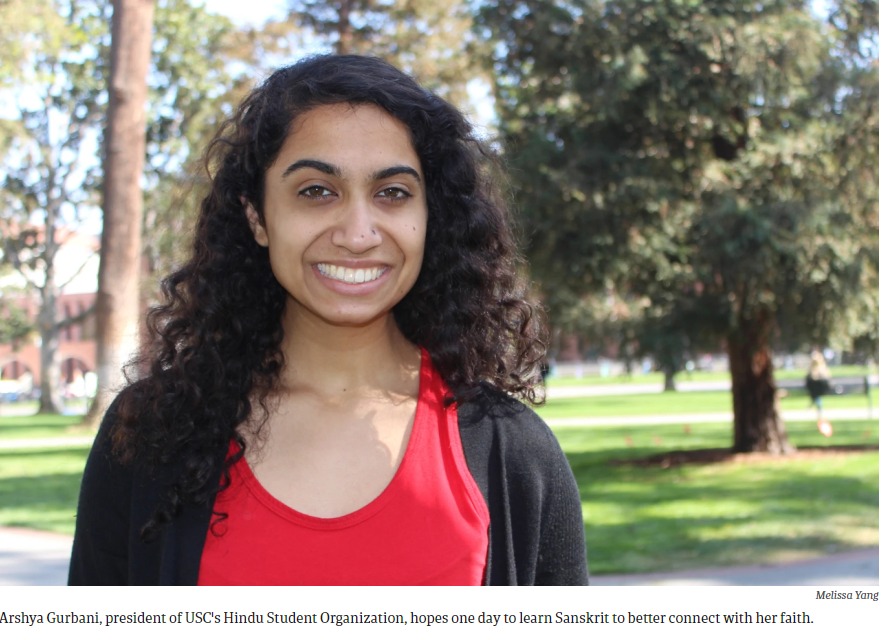On a Wednesday night, Arshya Gurbani reaches into a white cabinet and wakes a couple Hindu gods from their slumber. She carefully lays out statues of Ganesh and Shiva on a table in preparation for aarti, a worship ritual that reminds Hindus to stay humble and give thanks for good fortune.
But Gurbani, 21, and the other members of the Hindu Student Organization at USC put their own modern spin on this ancient practice during their weekly meetings. They play the devotional song “Om Jai Jagdish Hare” on YouTube as they sing off computer printouts. And coupled with the Hindi songs are verses in Sanskrit, spelled out phonetically so anyone can follow along.
“Growing up, you don’t necessarily know what you’re saying, but you keep saying certain Sanskrit phrases anyways,” Gurbani says. “Now that I’m older, I want to know what it means, and that causes me to look at it more critically than I would have if it were in English or even in Hindi.”
Hinduism’s canon of sacred texts — such as the epic poem “Mahabharata” and, within it, the Bhagavad Gita — is written in Sanskrit, but few Hindus today can read or speak the language. Many Hindu-Americans’ religious experiences are taught orally by family members or through translations into modern Indian languages. India’s most recent census numbers reported fewer than 15,000 people identified Sanskrit as their native tongue.
But despite being the world’s oldest language, Sanskrit has survived and remained largely unchanged due to its preservation within religious and scholarly studies. And now a resurgence of interest among young Hindus is pushing this once deemed “dead language” back into the conversation of what it means to be Hindu.
Gurbani and fellow HSO member Pavitra Krishnamani grew up memorizing mantras in Sanskrit, like the Gayatri Mantra, which asks for inner power, even though they didn’t always know what they were saying.
Krishnamani, 20, and her family speak Tamil, a Dravidian language used in south India that doesn’t derive from Sanskrit. To her, Sanskrit is more than just another language of communication.
“I may not necessarily always know what the words mean, but they have a certain feel to them when I say them,” Krishnamani says. “Being able to say those chants, I wouldn’t call it a vital part of Hinduism, but it’s a vital part of my experience.”
Those chants carry an energy with them, that people have been reciting them for millennia with the same spiritual thoughts in mind,” adds Swami Atmavidyananda, the faculty advisor to the religious group.
Read the rest @ https://www.kpcc.org/2014-02-28/religion-and-culture-hindu-americans-aren-t-writin






